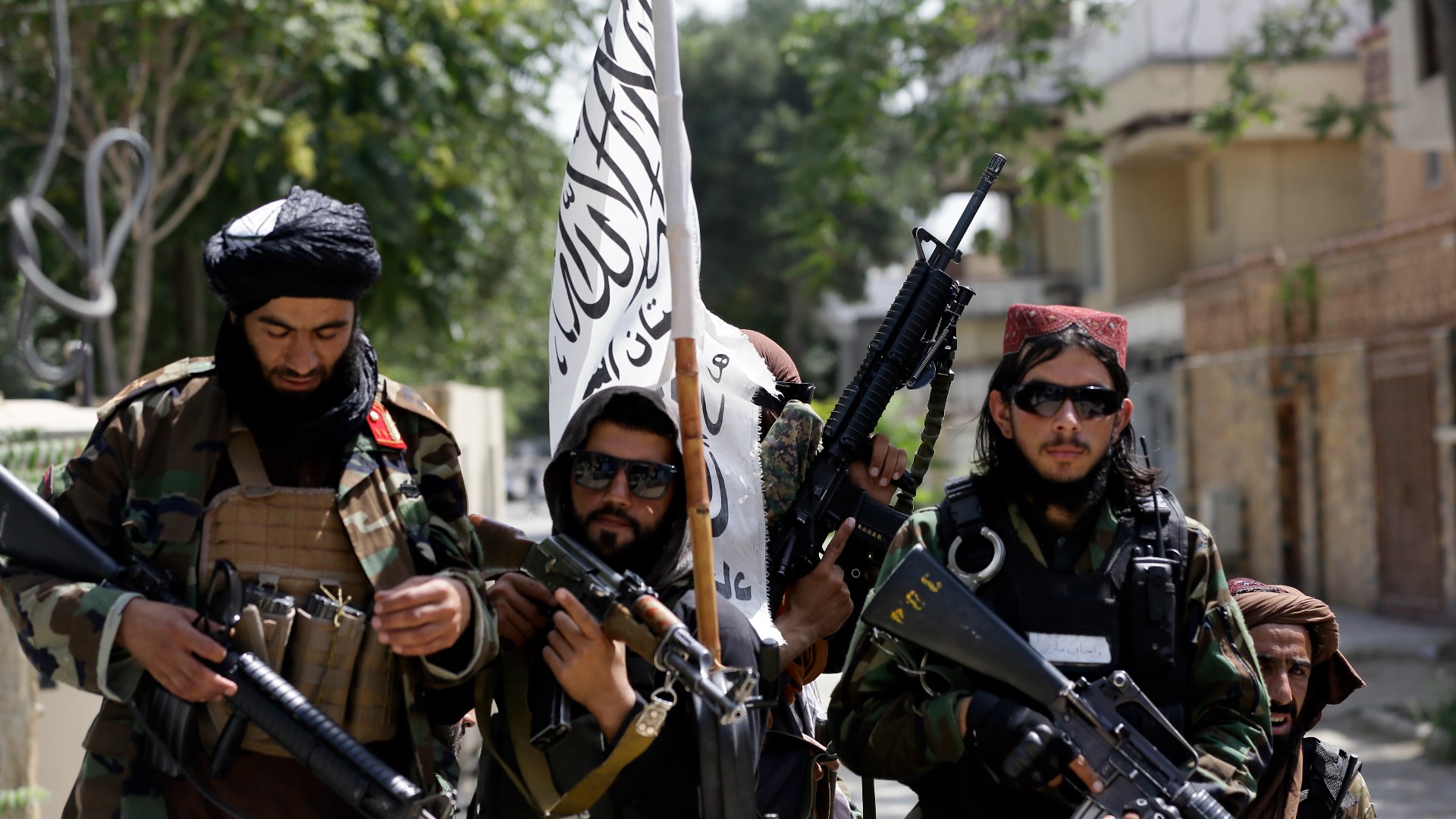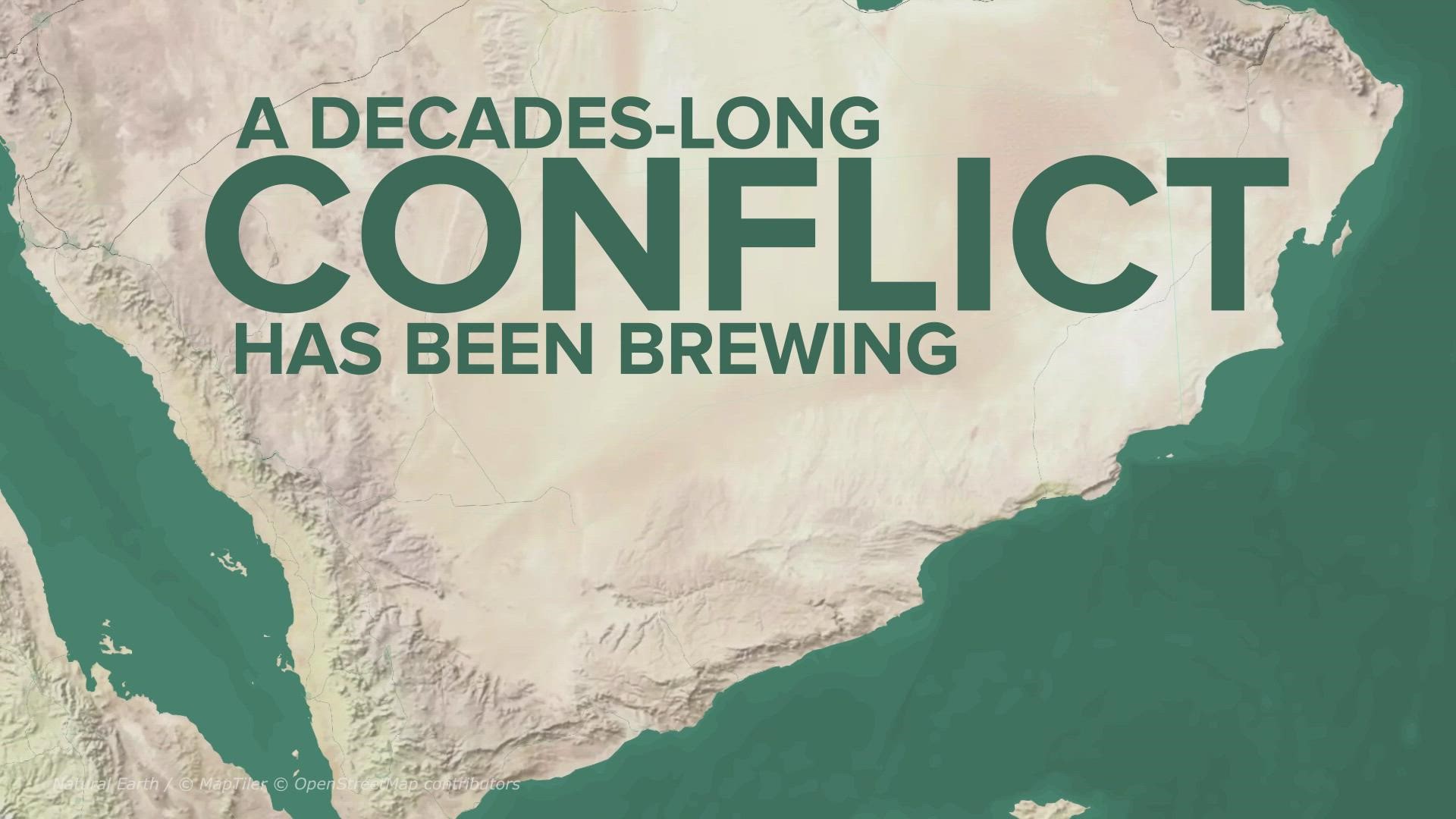Afghanistan has been a haven for terrorist organizations. Who are they, and what do they want?
Groups have formed and fragmented over time, but what makes them different or similar to each other?

A decades-long conflict has been brewing in the Middle East. Groups have formed and fragmented with different ideologies seeking control and power. But, who are they and what do they want?
Both ISIS and the Taliban want to build a state or caliphate where they can impose their own strict interpretations of Sharia law, the legal system of Islam.
The Taliban
The Taliban was formed in 1994 and is made up of Afghan resistance fighters who fought invading Soviet forces in the 1980s.
The main priority for these fighters is controlling Afghanistan, and the Taliban did briefly in 1996. During its five-year reign, the Taliban's rule has been described as brutal. They denied 160,000 civilians of food supplies from the United Nations, burned land, destroyed homes, and murdered Afghans.
It put strict rules in place, like keeping women at home and banning things like television and music to prevent any western influence.
Relations between the U.S. and the Taliban are complicated. Between 1994 and 1996, the U.S. possibly indirectly funded the Taliban through Pakistan, an ally at the time. In the late 1970s, the Soviet Union invaded Afghanistan, which resulted in the U.S. funding guerrilla-style fighters known as the mujahedeen.
In 1989, the Soviet Union withdrew from Afghanistan and the Taliban was born. Islamist commander Mullah Mohammad Omar formed a group of young Afghans, most from refugee camps, and trained them in strict Islamic ideology.
Now the Taliban is taking control of Afghanistan again. We are already seeing other groups make headlines like ISIS-K, which killed 13 American service members at Kabul's airport.
While the Taliban seeks its own local control over Afghanistan, other groups have bigger goals.
ISIS and ISIS-K
The Islamic State of Iraq and Syria, known as ISIS, poses a threat to stability in many regions of the Middle East and Africa.
There is also an offshoot of ISIS, known as ISIS-K. However, both groups are focused on ridding the entire Middle East of western influence.
ISIS-K formed around 2015. The 'K' in its name stands for Khorasan. It's a historical name for a region that covers Pakistan, Iran, Afghanistan, and part of Central Asia.
Even with similar beliefs, ISIS-K is a lot more intense than ISIS. ISIS-K tends to recruit Afghan and Taliban defectors who feel the Taliban's methods aren't extreme enough.
"Some of the worst bombings we have seen in the past few years are believed to have been carried out by ISIS-K. A couple of months ago, they bombed a women's school, killed over 75 people. They also bombed a hospital ward," said Arturo Jimenez-Bacardi, an assistant professor at the University of South Florida.
When former President Donald Trump took office in 2016, the White House issued the 'America First Foreign Policy' manifesto. It said defeating ISIS along with other terrorist organizations would be a top priority for the administration.
In 2017, former Secretary of State Rex Tillerson said, "The flow of foreign terrorist fighters into Syria and Iraq is down 90% over the past year. It is harder for terrorists to get in, and more importantly, harder for them to get out to threaten our homelands."
He adds the expansion of ISIS has caused a need for a large-scale military response, both physical and in the digital sphere. A priority of the U.S. was to prevent ISIS' ability to spread messages and recruit followers online, nicknamed a "digital caliphate."
Al-Qaeda
Out of these groups, Al-Qaeda has been around the longest, founded in Pakistan in 1988 by Osama Bin Laden.
It believes it's every Muslim's duty to fight those who may oppose Islam. Al-Qaeda is the group responsible for the 9/11 attacks.
Bin Laden wrote a 'Letter to America' in 2002, saying Al-Qaeda's motives behind 9/11 involved the presence of U.S. troops in Saudia Arabia, American support of Israel, and Western support for attacking and oppressing Muslims in Somalia and Kashmir.
After the 1991 Gulf war, there were about 5,000 U.S. troops in Saudi Arabia. The country is also home to some of the holiest sites in Islam, like Mecca and Medina, which upset individuals like bin Laden.
Several years later, Bin Laden issued a fatwa, which is an official ruling on a point in Islamic law. The fatwa read:
"For over seven years, the United States has been occupying the lands of Islam in the holiest of places, the Arabian Peninsula, plundering its riches, dictating to its rulers, humiliating its people, terrorizing its neighbors, and turning its bases in the Peninsula into a spearhead through which to fight the neighboring Muslim people."
However, today, experts believe the terror group is much more fragmented and decentralized, largely due to the U.S. invasion of Afghanistan and the killing of Bin Laden in Pakistan. The movements of the fragments that do exist often have little connection with one another.
"Al-Qaeda central at least is very weak compared to its pre-9/11 days. It has weak leadership, weak organization capabilities, but you do have these affiliates, especially Al-Qaeda in the Arabian peninsula and Yemen that are of concern to the U.S.," Jimenez-Bacardi explained.
The Future of the Middle East
It is unclear how long the Taliban could keep control of Afghanistan. President Joe Biden has said he stands by his decision to entirely pull out of the country.
The Taliban has promised a more lenient regime, but groups like ISIS and ISIS-K remain a threat to the Taliban, just like they do to the U.S. military.
With the U.S. now entirely out of Afghanistan, where does the country go from here? What about its surrounding countries? Only time will tell.


